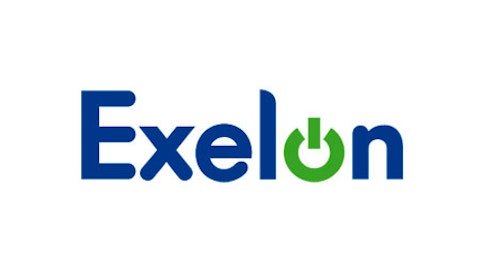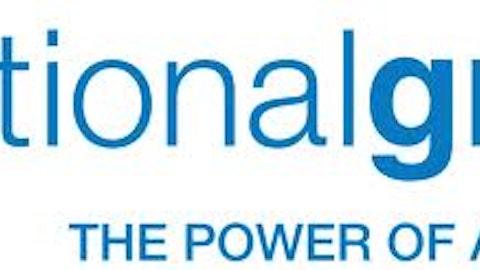 Four years ago, if an individual investor even entertained the idea of buying a stock, chances are it was in the utility sector. They were boring. Our grandparents would collect them like tourists collect sippy cups from amusement parks.
Four years ago, if an individual investor even entertained the idea of buying a stock, chances are it was in the utility sector. They were boring. Our grandparents would collect them like tourists collect sippy cups from amusement parks.
While some people feared the world was ending, they still figured out how to pay the light bill, which has helped fuel ironclad dividend utility stocks. Investors were so partial to utility stocks that the Dow Jones Utility Index returned nearly 25% from the market low in February and March 2009 to the same period the next year. Not bad for boring, old power companies.

Why? I don’t know about you, but my electric bill sure hasn’t gone down noticeably. We’ve made it into the second Barack Obama administration and the country is still without a concrete energy policy. So if regulatory risk isn’t the issue, then what gives?
Simple: interest rates and sector rotation. Currently, the fearful rise in interest rates ahead of rumors that the Federal Reserve will dial down its bond-buying program is the main influence on utility stock prices. This chart of the 10-year Treasury tell most of the story.

While a 10-year Treasury note’s 2.7% yield is nothing to get excited about, the market moving the interest rate needle 110 basis points should raise a few eyebrows, especially among utility investors. Everyone seems to have forgotten how sensitive utility stocks are to interest rates’ fluctuations, as they have been historically. While utility companies are cash-flow titans, they traditionally rely heavily on debtto finance their operations and expansion.
For example, utility aristocrat The Southern Company (NYSE:SO) carries a debt-to-capital ratio of about 47%. While that’s not bad for a large, regulated utility provider, it’s pretty close to half. Again, keep in mind that the constant cash flow allows a company like Southern to comfortably service debt and reward shareholders with fat dividends.

With that in mind, some of the punishment in utility stocks is probably a little overdone. There are some real bargains to be had that offer above-average income and upside. Here are three I recommend:
| TECO Energy, Inc. (NYSE:TE) Yield: 4.9% |
 From its humble beginnings as the Tampa Electric Company, TECO Energy, Inc. (NYSE:TE)’s reach stretches far beyond the Sunshine State. The company is in the process of acquiring New Mexico Gas Co. for $950 million. This will increase TECO’s regulated gas customer base by 147% around 855,000.The company’s aggressive interest in natural gas shows that management is focused on growth as it becomes a more viable energy source. The risk of Florida’s soft, post-crash real estatemarket is offset by its dense population. From its humble beginnings as the Tampa Electric Company, TECO Energy, Inc. (NYSE:TE)’s reach stretches far beyond the Sunshine State. The company is in the process of acquiring New Mexico Gas Co. for $950 million. This will increase TECO’s regulated gas customer base by 147% around 855,000.The company’s aggressive interest in natural gas shows that management is focused on growth as it becomes a more viable energy source. The risk of Florida’s soft, post-crash real estatemarket is offset by its dense population. |
| National Grid plc (ADR) (NYSE:NGG) Yield: 6.7% |
 Headquartered in the United Kingdom, National Grid plc (ADR) (NYSE:NGG) is a $43 billion international gas and electrical transmission company with a stake in the U.K. and United States.The British electrical division handles the high-voltage system for England and Wales, which serves 21 million customers and owns four of the country’s eight regional gas distribution networks. The U.S. transmission division covers 3.5 million electric customers and 3.4 million gas customers primarily in the Northeast.Here’s National Grid plc (ADR) (NYSE:NGG)’s strength: Some 95% of its revenuecomes from highly regulated utility rates. The company’s income stream is extremely predictable, which makes this stock a relatively low-risk holding. Headquartered in the United Kingdom, National Grid plc (ADR) (NYSE:NGG) is a $43 billion international gas and electrical transmission company with a stake in the U.K. and United States.The British electrical division handles the high-voltage system for England and Wales, which serves 21 million customers and owns four of the country’s eight regional gas distribution networks. The U.S. transmission division covers 3.5 million electric customers and 3.4 million gas customers primarily in the Northeast.Here’s National Grid plc (ADR) (NYSE:NGG)’s strength: Some 95% of its revenuecomes from highly regulated utility rates. The company’s income stream is extremely predictable, which makes this stock a relatively low-risk holding. |
| Entergy Corporation (NYSE:ETR) Yield: 5% |
.jpg) Lighting up the bayou for 2.6 million customers in Louisiana, Arkansas, Texas and Mississippi, Entergy Corporation (NYSE:ETR) is considered a “clean” power producer.Nearly one-third of its energy comes from nuclear power, which remains arguably the best and cheapest source of electricity. Lighting up the bayou for 2.6 million customers in Louisiana, Arkansas, Texas and Mississippi, Entergy Corporation (NYSE:ETR) is considered a “clean” power producer.Nearly one-third of its energy comes from nuclear power, which remains arguably the best and cheapest source of electricity..jpg) The company stands to benefit from increased business activity in the region thanks to the country’s growing oil production and refining boom. Entergy Corporation (NYSE:ETR) has also initiated a comprehensive cost-cutting program to reduce internal expenses and headcount. The company stands to benefit from increased business activity in the region thanks to the country’s growing oil production and refining boom. Entergy Corporation (NYSE:ETR) has also initiated a comprehensive cost-cutting program to reduce internal expenses and headcount. |
Risks to consider: Investors and markets tend to punish all members of a sector when it’s time to sell. While investors of these three stocks can expect to get bounced around, the high-quality of these companies’ business models, strategy and dividend yields should compensate for the risk. Interest rates could also continue to creep higher, especially if the Fed does indeed stem its open-market bondpurchases. Expect utility stock prices to remain under continued pressure.
Action to take –> As a basket, these three stocks trade with an average forward price-to-earnings (P/E) ratio of 13.8 and a blended dividend yield of 5.53%. The Dow Jones Utility Index currently has a forward P/E of 16 and a dividend yield of just 3.8%. Owning these three stocks gives the investor a slight discount to the multiple of the index with 36% more income. If “tapering” anxiety subsides, the relief could lift these stocks 30% or more based on their higher quality. This is a great opportunity, considering the dividend would bring a potential total return north of 35%. Not bad for your grandmother’s utility stock.
P.S. — These aren’t the only companies looking to profit from this trend. The abundance of natural gas in the U.S. could lead to a third industrial revolution. One analyst is predicting a stock could rise 1,566%. Another stock has already jumped by more than 1,000% and is expected to keep going. To learn more about investing in the natural gas boom, click here.
Warren Buffett’s Top 5 Stocks
Buffett’s firm, Berkshire Hathaway, holds dozens of stocks. But these five make up 75% of its portfolio… worth $65 billion. Click here to get Buffett’s top 5 stocks plus his 16 latest buys, FREE.





